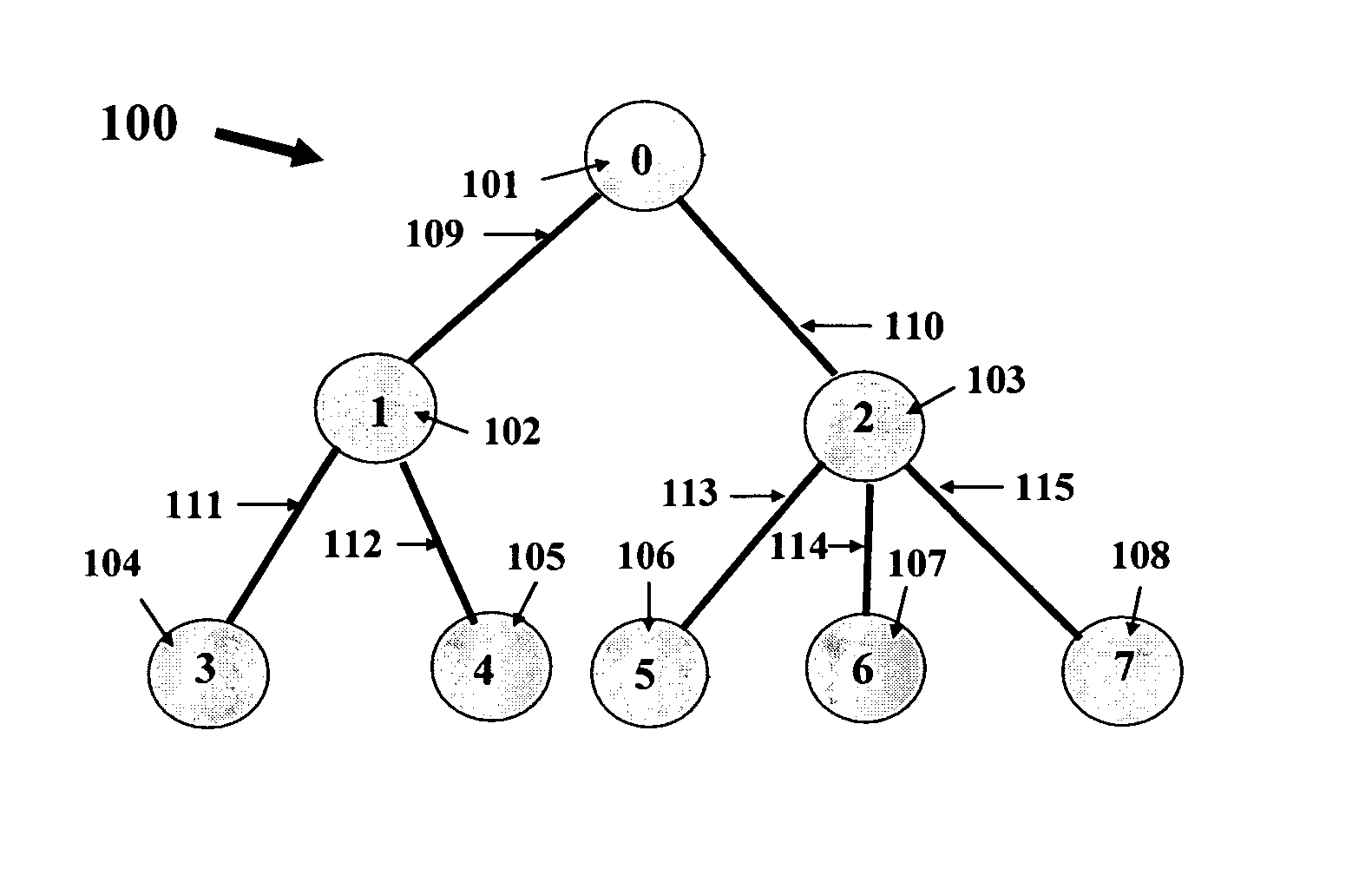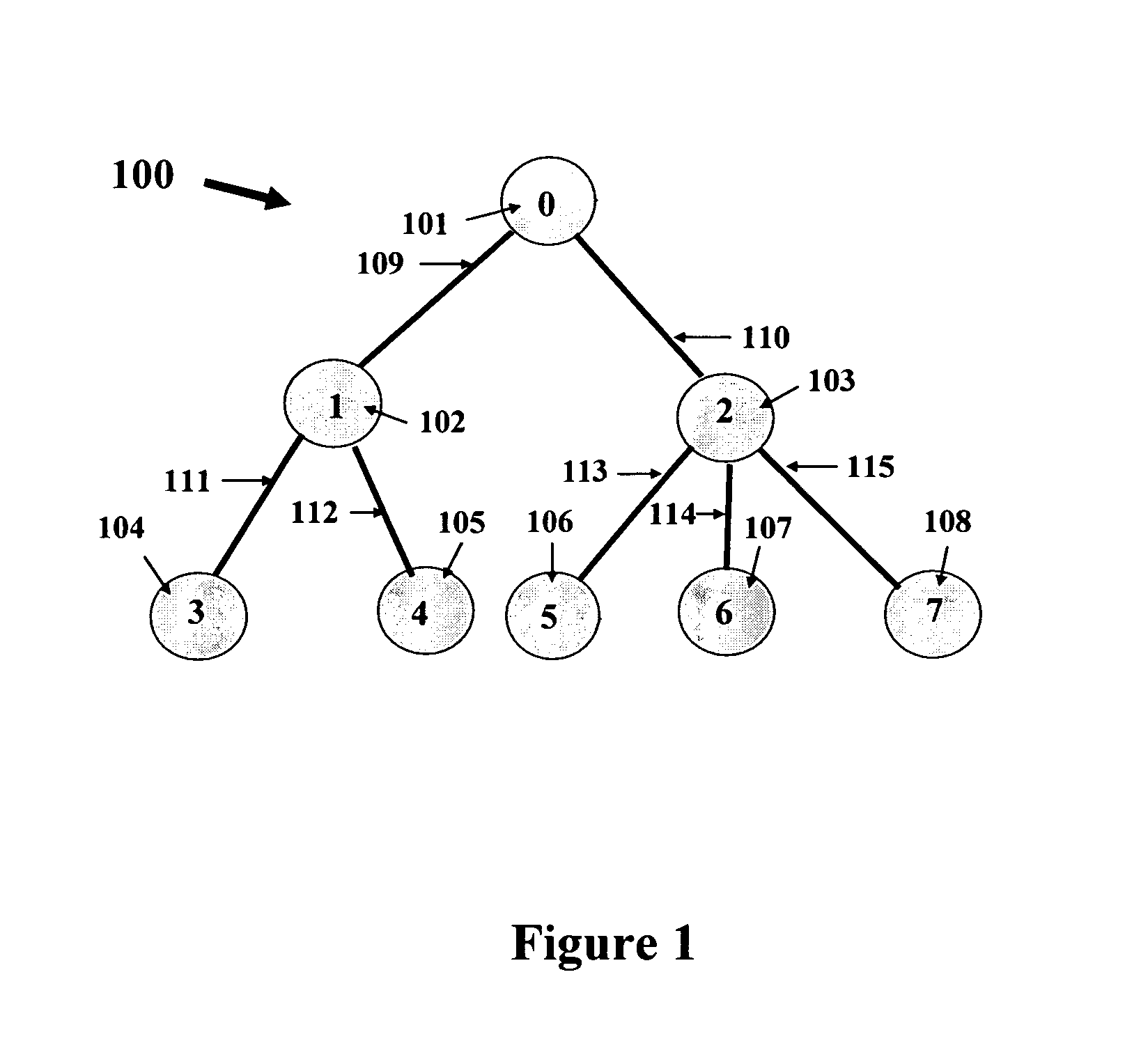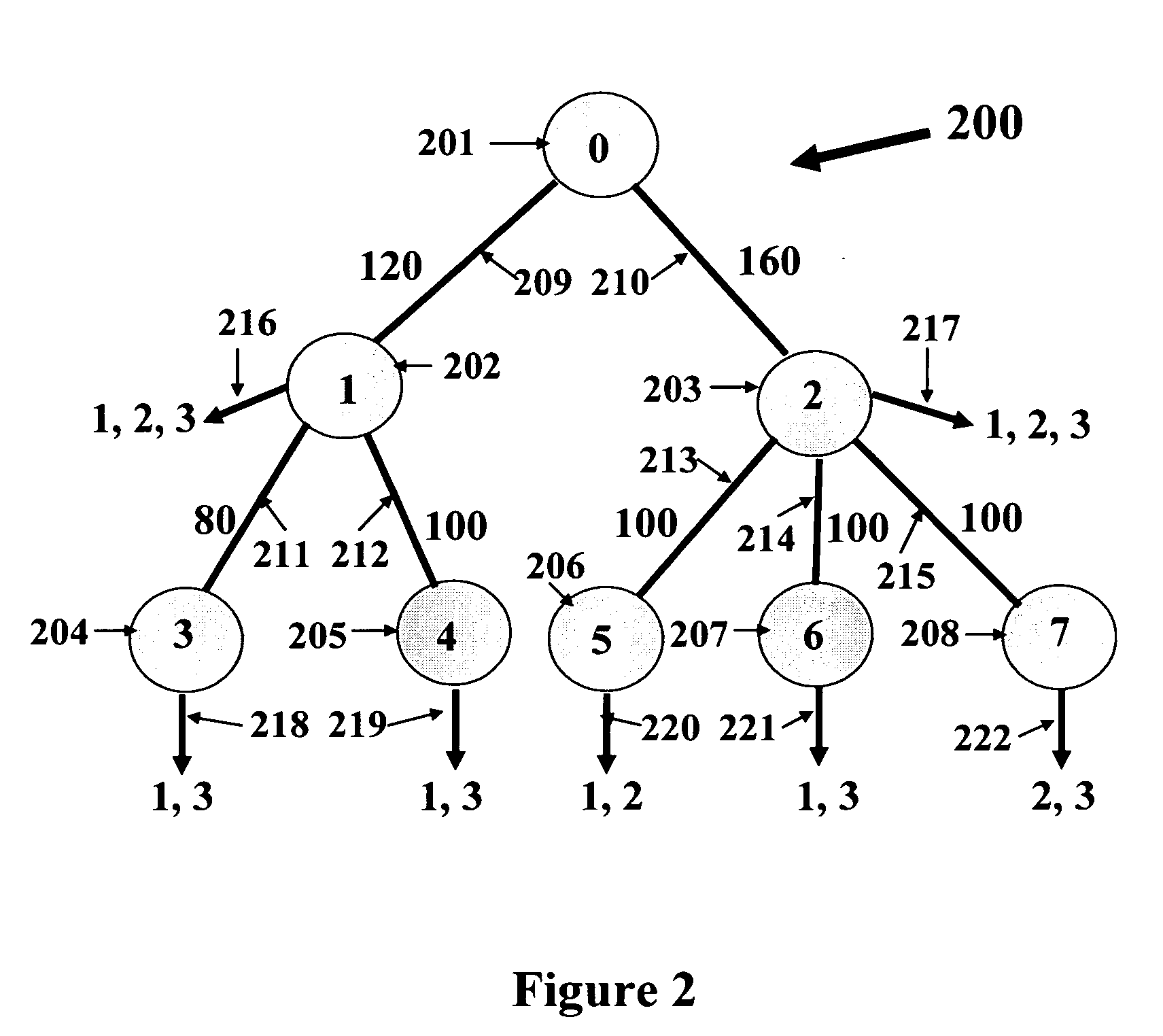Bandwidth allocation for video-on-demand networks
a technology of video-on-demand networks and bandwidth allocation, applied in the field of video-on-demand networks, can solve the problems of affecting the feasible allocation decisions at other links, each link on the network has a limited amount of available bandwidth, etc., and achieve the optimal allocation of available bandwidth and allocate the available bandwidth
- Summary
- Abstract
- Description
- Claims
- Application Information
AI Technical Summary
Benefits of technology
Problems solved by technology
Method used
Image
Examples
Embodiment Construction
[0009] Referring now to the figures and to FIG. 1 in particular, there is shown an example of a VOD tree network 100. The network includes eight nodes 101-108. Node 101 is the root node. The nodes are interconnected by links 109-115. Node 101 (also labeled as node 0) has the VOD server. The VOD server stores multiple programs, labeled as p=1, 2, . . . , P. The server broadcasts program p to nodes that request VOD service for program p for p=1, 2, . . . , P. Each link, generically called link l, has a limited bandwidth capacity of cl. The sum of bandwidth allocated on link l to all programs carried on link l cannot exceed the capacity of link l. Any of the nodes, generically called node n, may decrease the bandwidth of any program p on any of the outgoing links from node n. For example, suppose the delivery technology of a VOD program comprises repeated broadcasting of the program from the root node (this technology is often referred to as near-VOD). Then, any node n may increase (or...
PUM
 Login to View More
Login to View More Abstract
Description
Claims
Application Information
 Login to View More
Login to View More - R&D
- Intellectual Property
- Life Sciences
- Materials
- Tech Scout
- Unparalleled Data Quality
- Higher Quality Content
- 60% Fewer Hallucinations
Browse by: Latest US Patents, China's latest patents, Technical Efficacy Thesaurus, Application Domain, Technology Topic, Popular Technical Reports.
© 2025 PatSnap. All rights reserved.Legal|Privacy policy|Modern Slavery Act Transparency Statement|Sitemap|About US| Contact US: help@patsnap.com



